How To Make Fool Proof Fluffy Scrambled Eggs
Fluffy scrambled eggs are a breakfast staple. While making scrambled eggs is a basic kitchen task, a lot of people debate over the best method for making perfect scrambled eggs. My method for making the perfect light scrambled eggs shows you exactly how to make foolproof fluffy scrambled eggs that are silky and custardy every time.
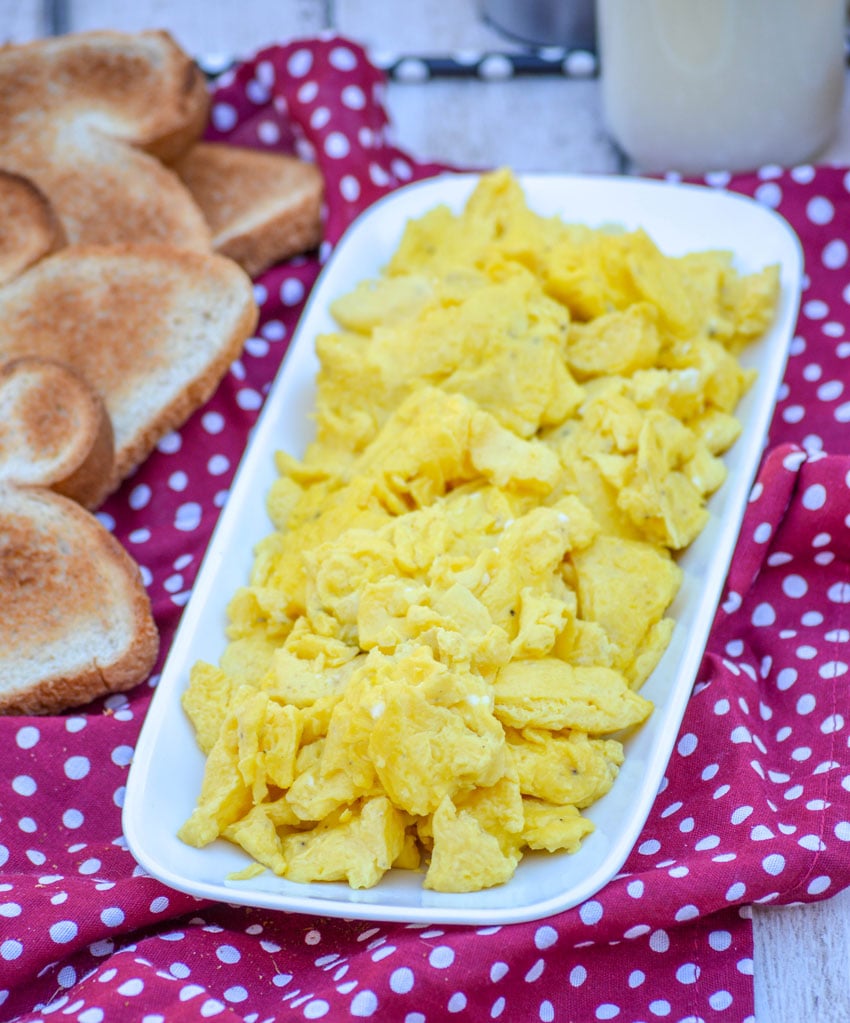
Scrambled eggs are one of those foods that appears on my breakfast table regularly. Heck, sometimes they may even show up on our dinner table when I’m in a pinch. I used to not think too much about how to make my scrambled eggs. I just whisk eggs with some milk or cream and cook them in a pan. But my results varied greatly.
Sometimes, they’d be creamy. Other times, the results would be less than perfect. But since scrambled eggs are such a staple I decided it was time to find the method that would result in perfectly fluffy scrambled eggs each and every time.
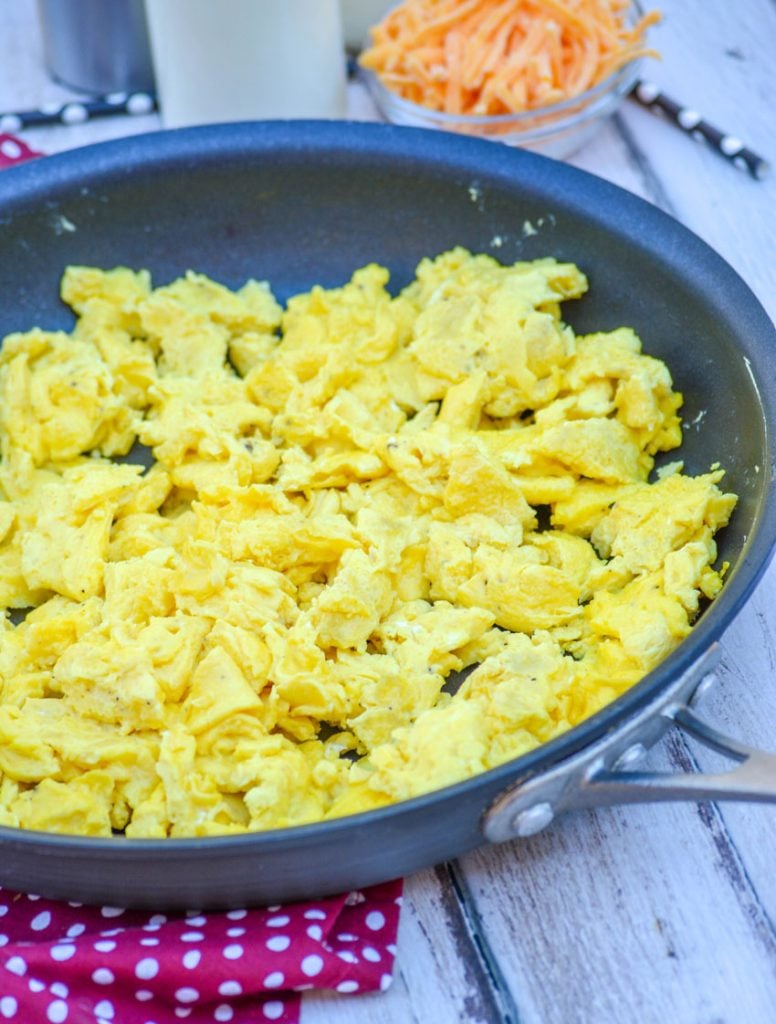
The Science of Cooking Eggs
Before we talk about how to make the perfect scrambled eggs, let’s unpack the science behind cooking eggs so you’ll know exactly why my method of scrambling eggs works so well.
Egg whites are primarily water with some protein molecules sprinkled it. Egg yolks are also protein and water but bind up with fat. According to Fine Cooking, the egg white molecules are all negatively charged. This means these molecules push away from each other. This gives the egg whites their runny texture. Fat binds to some of the proteins in the egg yolks, so egg yolks have a more neutral charge. This more neutral charge means the yolks aren’t as runny and the proteins bind together more in the yolk.
So what does this mean for cooking eggs?
When you cook eggs, the molecules in the egg begin to move faster. They crash together, which causes the egg proteins to unravel. As the eggs continue to cook, the protein strands keep moving around and bumping into each other. Eventually these protein strings will tangle and form a bonded web. This webbed protein doesn’t allow much room for water so the water gets pushed out of the egg. At this part of the cooking process, you may see the water leaving the eggs in a process called weeping. When this happens, the water will evaporate. As the water gets cooked out of the eggs, the eggs will form their curds.
Put simply, this means the longer the eggs cook, the more water will get cooked out of the eggs. The more water that gets cooked out of the eggs, the tighter the protein webs will be. If they get too tight like when eggs are scrambled for too long, the eggs will become tough and rubbery. On the other hand, if you don’t cook the eggs long enough, too much water will remain in the eggs so they will be runny.
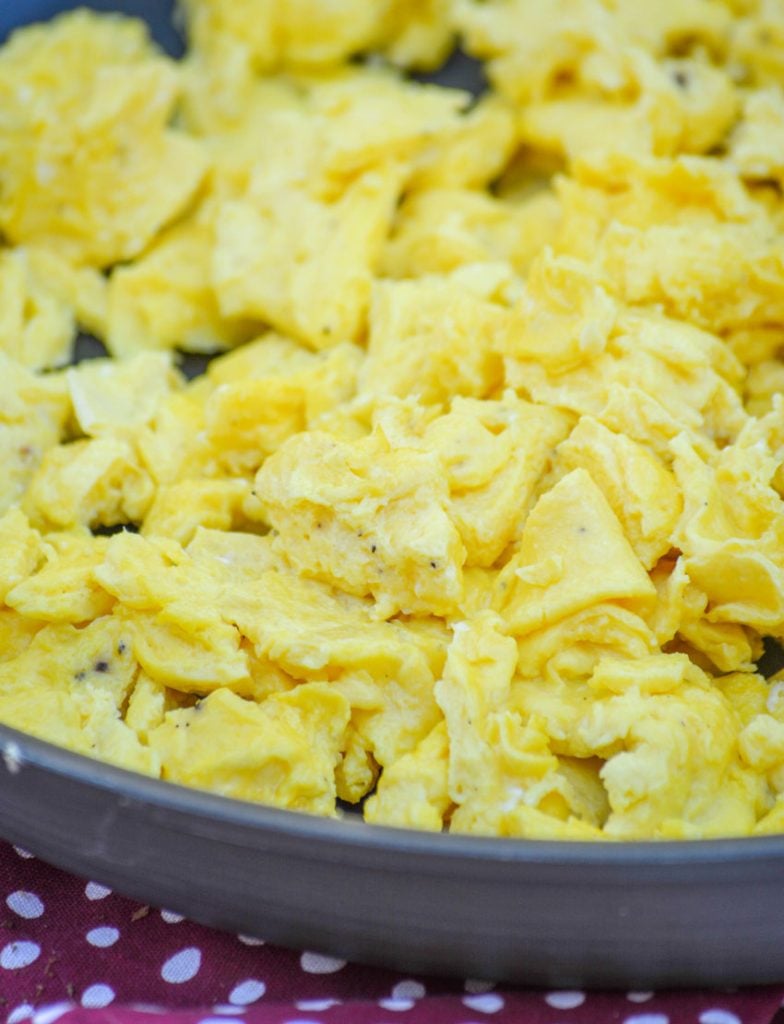
How to Create Perfectly Textured Scrambled Eggs
The perfect scrambled egg texture is a bit subjective. Some people prefer firmer eggs with larger curds. Other people prefer silkier scrambled eggs with small curds. I fall somewhere in the middle. I like my eggs to be silky and creamy while having fluffy curds.
A few key things help me get this texture:
- Cooking the eggs in butter not oil. Butter prevents sticking better than oil. No sticking means no crunchy brown parts.
- Adding heavy whipping cream. The cream adds extra richness and the added liquid gives the eggs a silkier texture. Without the cream, the eggs would be firmer.
- Stirring. The more you stir the eggs the silkier they will be. The less you stir the eggs, the firmer they will be. I stir occasionally in the beginning, pulling the eggs to the center of the pan from the outside.
- The heat. I start these scrambled eggs over medium to medium low heat. This allows them to gently cook so the liquid in the egg doesn’t weep out. The gentle cooking prevents tough eggs.
- Whipping the eggs. I beat them vigorously, but do not overbeat them. I stop when the eggs as soon as the eggs are totally combined. Overwhipping the eggs will also create tougher eggs.
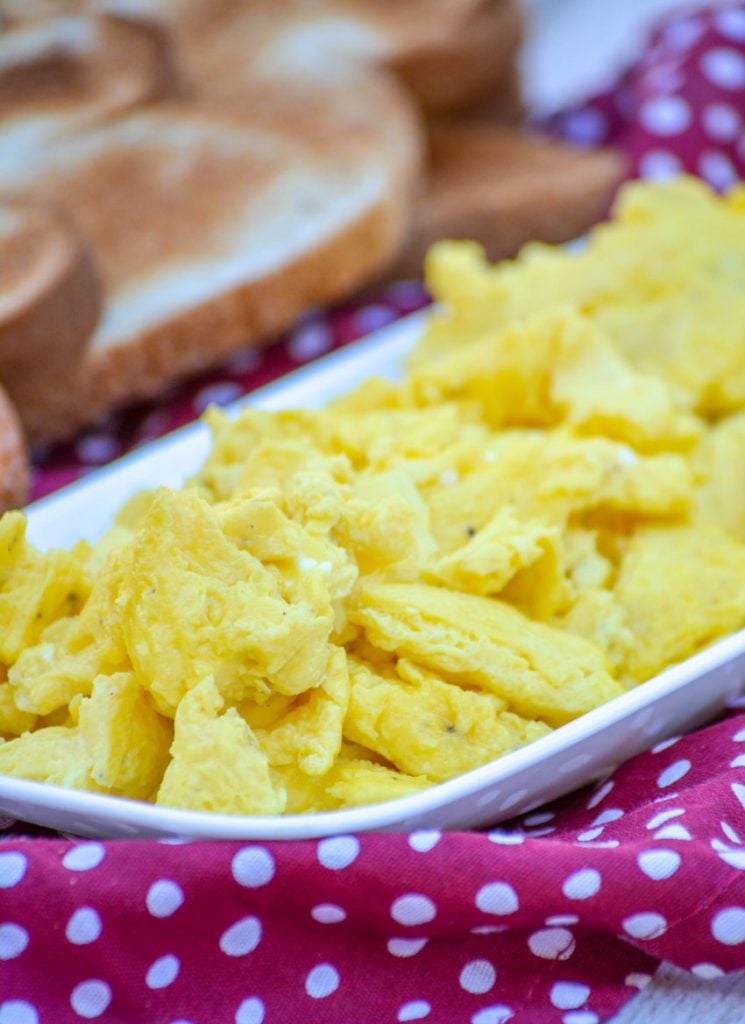
Do’s and Don’ts for Making Perfect Scrambled Eggs Every Time
Do choose the right pan each time you make scrambled eggs.
In most cases, this means going with a nonstick pan. A nonstick pan will help prevent sticking. Not only does that mean easier clean up, but it means no weird crispy parts. If you plan to make the scrambled egg recipe with the full dozen eggs as I’ve written, then you’ll want to use a large pan. The large surface area will allow the eggs to evenly cook. Making scrambled eggs for one? A smaller nonstick pan will be just fine.
Don’t use cast iron.
Yes cast iron cooking is fantastic, but I don’t recommend cooking scrambled eggs in cast iron. The iron in the cast iron pan can react with the sulfur in the eggs and turn your scrambled eggs an unappealing shade of green. Plus, unless the cast iron pan is really well seasoned, your eggs will likely stick to it. This creates a mess to clean up and gives you those unappealing burned parts.
Do feel free to add flavors.
My basic recipe for perfect scrambled eggs is just that: a base. Feel free to get a little fancy with your eggs and stir in cheese, herbs, or other things like cooked bacon for an extra delicious treat.
Don’t be afraid to add salt.
Not only does salt add flavor, salt helps the eggs cook faster. It brings the egg proteins together and lowers the cooking temperature needed for the eggs to start to firm up. This creates a shorter cook time, which results in eggs that are more moist and tender.
Do choose the right spatula.
A wooden spatula will work but it won’t move the eggs out of the sides of the pan as well, which will result in more sticking. Go with a nonstick spatula for best results.
Don’t use a metal spatula.
Metal spatulas can scratch the surface of nonstick pans.
Do remove the scrambled eggs from the heat as soon as they start to firm up.
Scrambled eggs continue to cook even after you remove them from the heat. Taking them off the heat when they are a bit underdone accounts for the carryover cooking and helps you avoid rubbery, overcooked eggs.
Don’t be afraid to add scrambled eggs to other breakfast dishes.
Scrambled eggs make the perfect filling for breakfast enchiladas, a copycat Taco Bell breakfast crunch wrap, and burritos. They are also perfect in breakfast lasagna, breakfast calzones, and breakfast sliders.
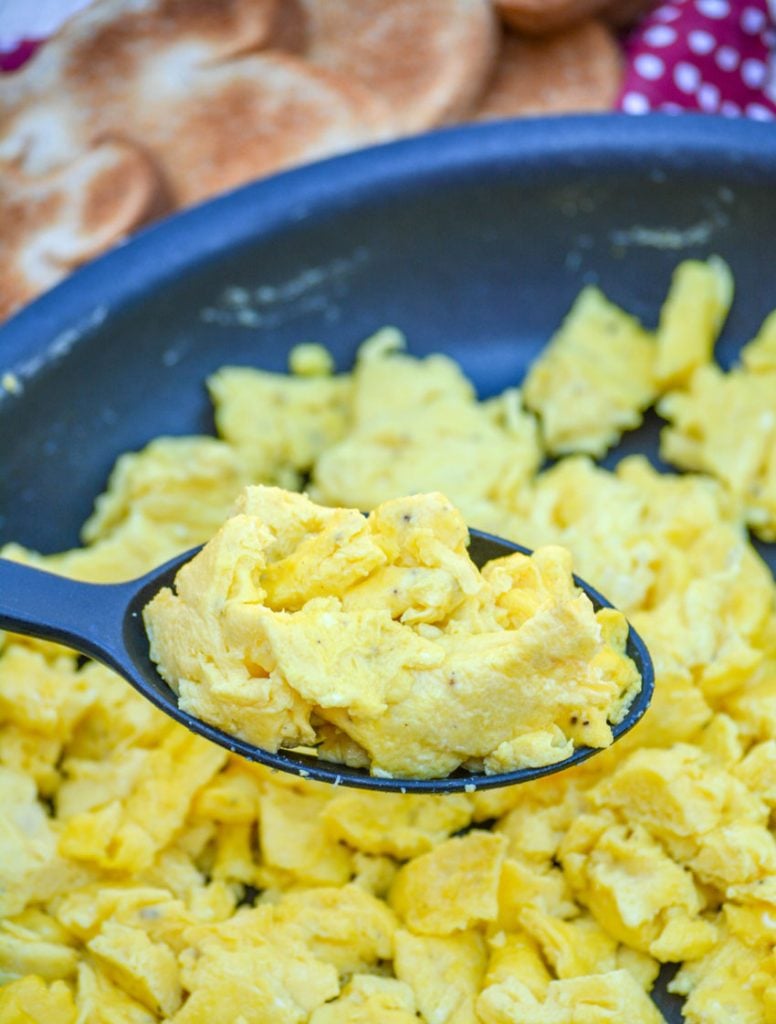
What to Serve with Scrambled Eggs
While scrambled eggs make a delicious breakfast and brunch main dish, any of these side dishes would be fantastic with these fluffy scrambled eggs:
- Diner Style Home Fried Breakfast potatoes
- Cheesy Hash Brown casserole
- Three Cheese Grits Breakfast Casserole
Or keep things simple, and go with the classic breakfast. A breakfast meat like sausage links, or crisp strips of bacon & some toast is simple but always filling.
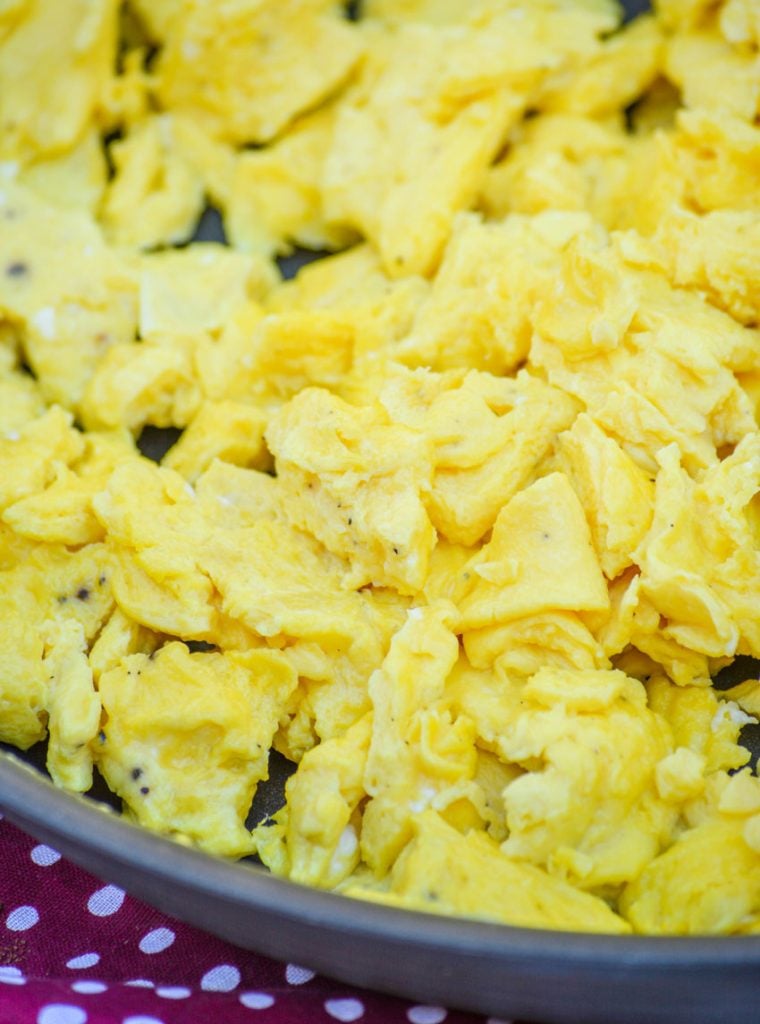
With these tips and tricks you will have the best scrambled eggs each and every time.
If you’ve tried these FLUFFY FOOL PROOF SCRAMBLED EGGS, or any other recipe on my site, let me know in the comment section how it turned out, we love hearing from our readers! You can also follow along with me on PINTEREST, FACEBOOK, and INSTAGRAM to see more amazing recipes and whatever else we’ve got going on!
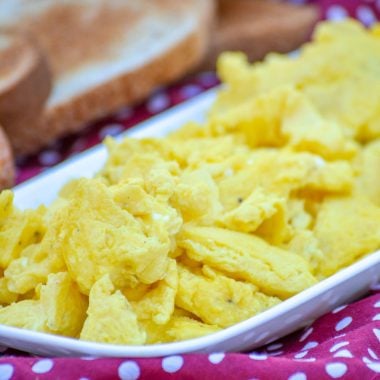
How To Make Fool Proof Fluffy Scrambled Eggs
Ingredients
- 2 tbsp butter
- 12 eggs room temperature
- 1/2 cup heavy whipping cream
- salt & pepper to taste
Instructions
- Break the eggs into a large mixing bowl, making sure no shell gets into the mix. Add the cream to the bowl, and whisk vigorously until the mixture's smooth & frothy. The longer you whip, the fluffier your eggs will end up being.
- Melt the butter in a large skillet over medium heat, then reduce heat to medium low.
- Pour the egg mixture out into the skillet. Let the eggs cook low and slow, using a spatula to occasionally fold the eggs and break up. You can do this by using the spatula to pull/fold the cooked outer edges back in towards the center. The uncooked mixture will flood out.
- Continue pulling the cooked eggs toward and folding them into the center. When no more egg mixture floods out to the edges, start scrambling your eggs. Break them up and stir them quickly and evenly so all bits of egg cook evenly. Working quickly will prevent overcooking, sticking, or burning.
- Remove the skillet from heat, and let the eggs rest for 60 seconds. Serve these moist, fluffy eggs with your favorite breakfast sides.
Nutrition

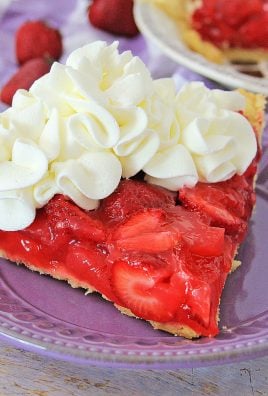
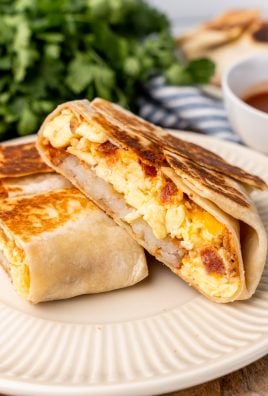
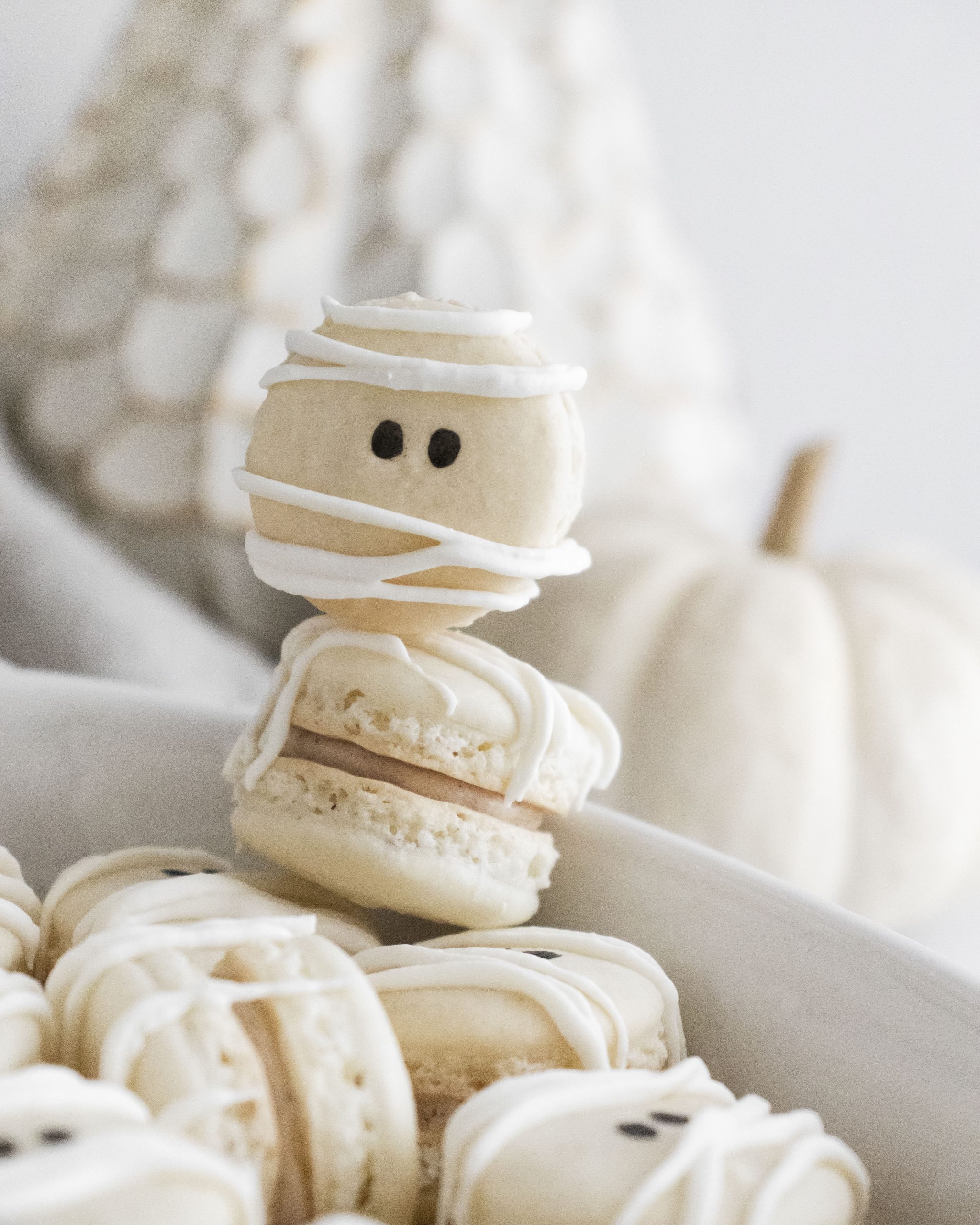
These look great. Thanks for sharing on Fiesta Friday!
I made this recipe for my family and it is perfect. I used a nonstick pan so the butter was not necessary, but the fluffy, creamy, warm eggs were so delicious. Thank you for this awesomely quick and few ingredient recipe.
I just used your recipe and the eggs came out to perfection. Thanks for sharing.
That is pretty much the way I have always made scrambled eggs. However, I have always used cast iron. Never once have I come out with greenish looking eggs.
Can’t wait to make this!